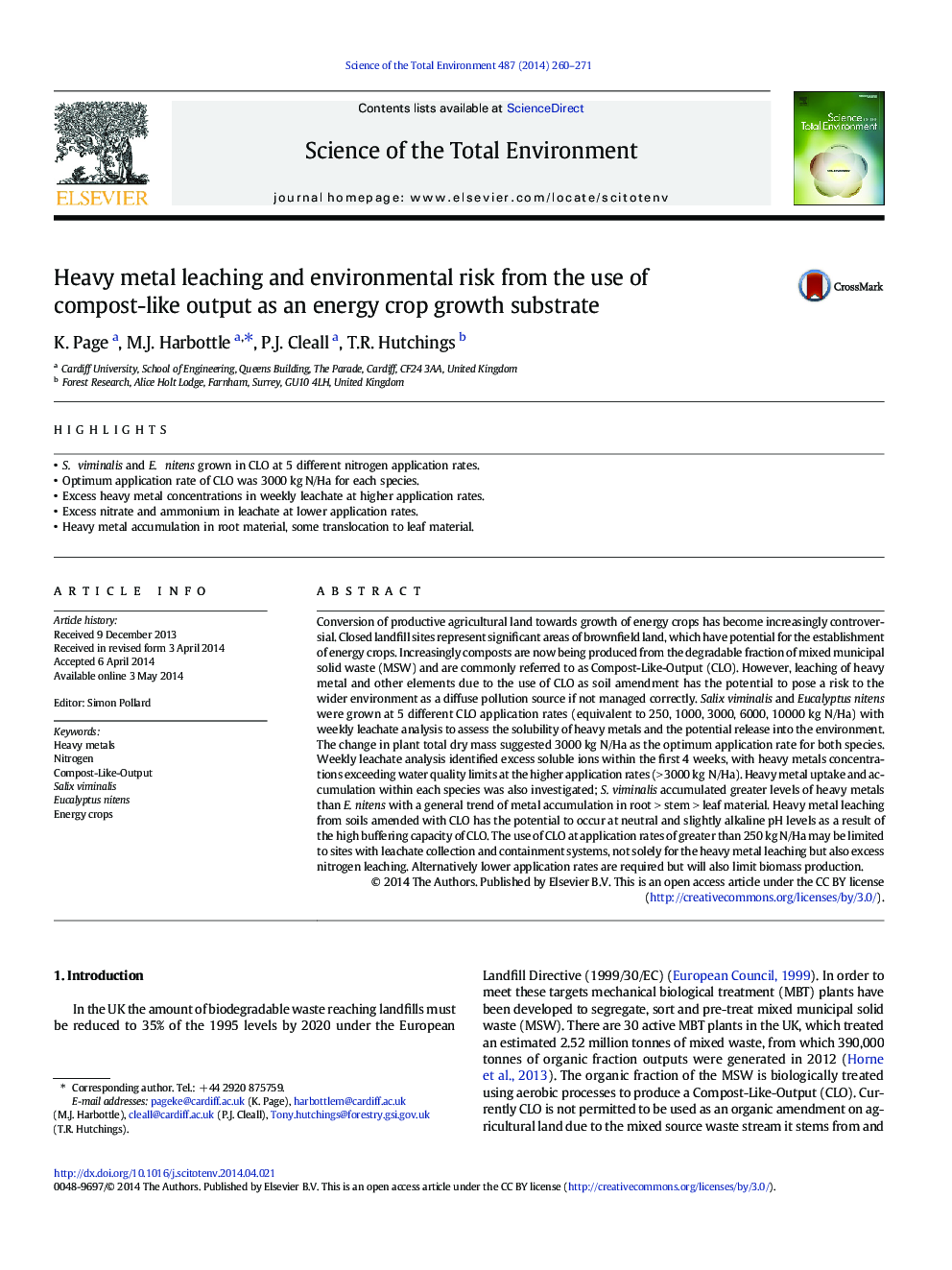| کد مقاله | کد نشریه | سال انتشار | مقاله انگلیسی | نسخه تمام متن |
|---|---|---|---|---|
| 6329928 | 1619782 | 2014 | 12 صفحه PDF | دانلود رایگان |
- S. viminalis and E. nitens grown in CLO at 5 different nitrogen application rates.
- Optimum application rate of CLO was 3000 kg N/Ha for each species.
- Excess heavy metal concentrations in weekly leachate at higher application rates.
- Excess nitrate and ammonium in leachate at lower application rates.
- Heavy metal accumulation in root material, some translocation to leaf material.
Conversion of productive agricultural land towards growth of energy crops has become increasingly controversial. Closed landfill sites represent significant areas of brownfield land, which have potential for the establishment of energy crops. Increasingly composts are now being produced from the degradable fraction of mixed municipal solid waste (MSW) and are commonly referred to as Compost-Like-Output (CLO). However, leaching of heavy metal and other elements due to the use of CLO as soil amendment has the potential to pose a risk to the wider environment as a diffuse pollution source if not managed correctly. Salix viminalis and Eucalyptus nitens were grown at 5 different CLO application rates (equivalent to 250, 1000, 3000, 6000, 10000 kg N/Ha) with weekly leachate analysis to assess the solubility of heavy metals and the potential release into the environment. The change in plant total dry mass suggested 3000 kg N/Ha as the optimum application rate for both species. Weekly leachate analysis identified excess soluble ions within the first 4 weeks, with heavy metals concentrations exceeding water quality limits at the higher application rates (> 3000 kg N/Ha). Heavy metal uptake and accumulation within each species was also investigated; S. viminalis accumulated greater levels of heavy metals than E. nitens with a general trend of metal accumulation in root > stem > leaf material. Heavy metal leaching from soils amended with CLO has the potential to occur at neutral and slightly alkaline pH levels as a result of the high buffering capacity of CLO. The use of CLO at application rates of greater than 250 kg N/Ha may be limited to sites with leachate collection and containment systems, not solely for the heavy metal leaching but also excess nitrogen leaching. Alternatively lower application rates are required but will also limit biomass production.
Journal: Science of The Total Environment - Volume 487, 15 July 2014, Pages 260-271
